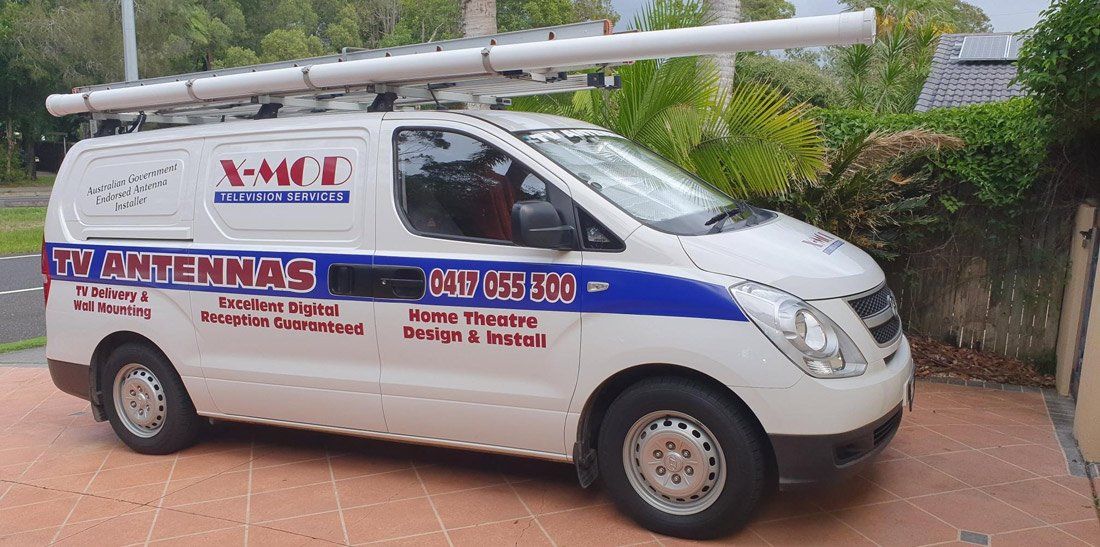Frequently Asked Questions
TV Aerial Installation & Television Services

FAQs
- Do I have to replace my old antenna to receive all Digital TV channels?
Not necessarily. If your existing antenna is in good condition and connected to your wall outlets with quality coaxial cables, you should be able to get adequate reception in good signal areas. However, if you are missing some channels, get a pixelated picture or signal drop outs a new Digital Antenna may be required. Just go to the Freeview site to see the channels available for Australian audience.
- What are the benefits of having Digital TV transmission?
Digital transmission allows more data to be carried from the signal source to the end user. Consequently, you get significantly improved picture and sound quality. It also allows a greater number of channels and content to be broadcast within the same frequency range. Other great features that come with digital TV include electronic program guides, parental lockout systems, closed captioning or subtitling to offer hearing impaired people a text version of dialogue. Another benefit of Digital television is its greater resistance to noise created by electrical appliances, which results in less interference and better TV reception.
- How do I re-tune my TV and why do I need to do it?
If you just moved into a new property and can’t get any reception, the first thing you should do is run an auto-tune setting on your TV set. Your TV usually stores channels in its memory based on the frequencies your previous antenna was tuned to. For example, if you lived in an area closer to a Brisbane transmission tower your antenna would have been using VHF frequencies and your TV stored those parameters in its memory. If you then moved to an area closer to the Maleny repeater, your antenna will most likely work on UHF frequencies, so you will have to update your TV tuner’s memory by running an auto-tune. To do that, select the “Settings” option in your TV Menu and look for “auto-tuning” or “auto-scan”. Click “Ok” or “Run” and your TV will automatically search for relevant channels and re-write previously memorised parameters.
- Can my new TV aerial be installed in a roof space?
No, However, we recommend external installation due to a higher possibility of signal obstruction and interference when antenna is installed inside a roof cavity. Modern Digital antennas are quite compact and we always aim to position them towards the back of a roof, so they are less visible from a façade. We understand your desire to keep antennas away from the street view, but we also need to make sure you are getting the best signal possible. Our technicians will work with you to find the right balance between the looks and practicality of your antenna set up.
- I have a very tall mast on my roof and I need to install solar panels. Will I still have a decent TV reception?
There are certain areas on the sunshine coast where having a tall mast is inevitable to get a good line of sight to a transmission tower. However, in a lot of cases there is an alternative repeater that can be used for Free-to-Air reception. Quite often people don’t know what options are available and have to put up with an “overkill” structure on their roofs.
- I’m planning to add extra TV points in my house. Is there a limit to how many can I install?
It depends on the signal level in your area. Generally, in a good reception area with a quality High Gain antenna we can connect up to 3 TV points without a significant loss of signal, providing your cables are in good condition. If you are planning to connect 4 or more points we recommend to install a mast head amplifier (booster) as well to keep the signal above the recommended minimum. Out technicians can confirm if an amplifier is needed once they measure the signal from your existing antenna.
- Can the installation of an amplifier improve my reception?
Yes and No… If your existing TV antenna is receiving a good quality signal, but the strength is not there, the amplifier will certainly help. This usually happens when you are located further away from a transmission tower. However, an amplifier will not improve quality of the signal, it may actually do the opposite – amplify the noise that is being picked up by your antenna.
- I have a new LED 4K TV, but picture quality is poor when I watch Digital TV. Do I need to replace my antenna?
If you can get all digital channels and don’t get any pixelation or signal drop outs, your antenna is working fine. Quite often people expect to see the same quality picture as in a shop display and it simply can’t be achieved through FTA Digital broadcast, at least not yet. Digital TV broadcast in Australia is currently limited to Standard Definition (720P) and High Definition (1920P). There are only a few sources of 4K resolution videos, mostly supplied on 4K Blu-Ray Discs and selected shows via Internet TV channels.
- I recently replaced my antenna, but still get pixellation. Is this antenna-related?
Pixelation on your TV can be caused by various factors. While your new antenna can pick up a decent signal it’s also important to check what signal levels are like on the end points. Quite often in older houses you may have poor quality cables, splitters or connections on the wall plates. All of these components will have an impact on the end result and need to be checked. However, if the signal on end points is strong the pixelation is most likely caused by external interference or noise. It may come from a nearby Mobile transmission tower or even your electrical appliances. Finding the source of the noise is part of the solution. Once it’s determined you can use different ways of minimising the interference, such as using a powerful amplifier with built-in interference rejection filters, or changing the cables, or a better quality shielded type.
Reviews

We use X-Mod in our park for all our repairs, fixes, TV and antenna needs. Awesome service, Great price and friendly honest service to boot. Highly recomended
- Maroochy River Park Enquiry
Button
We were delighted at the level of service Chris Ryan from Xmod Television Services provided. He really went above and beyond the call of duty for us. Would highly recommend him to anyone.
- Gerard Morris
Button
